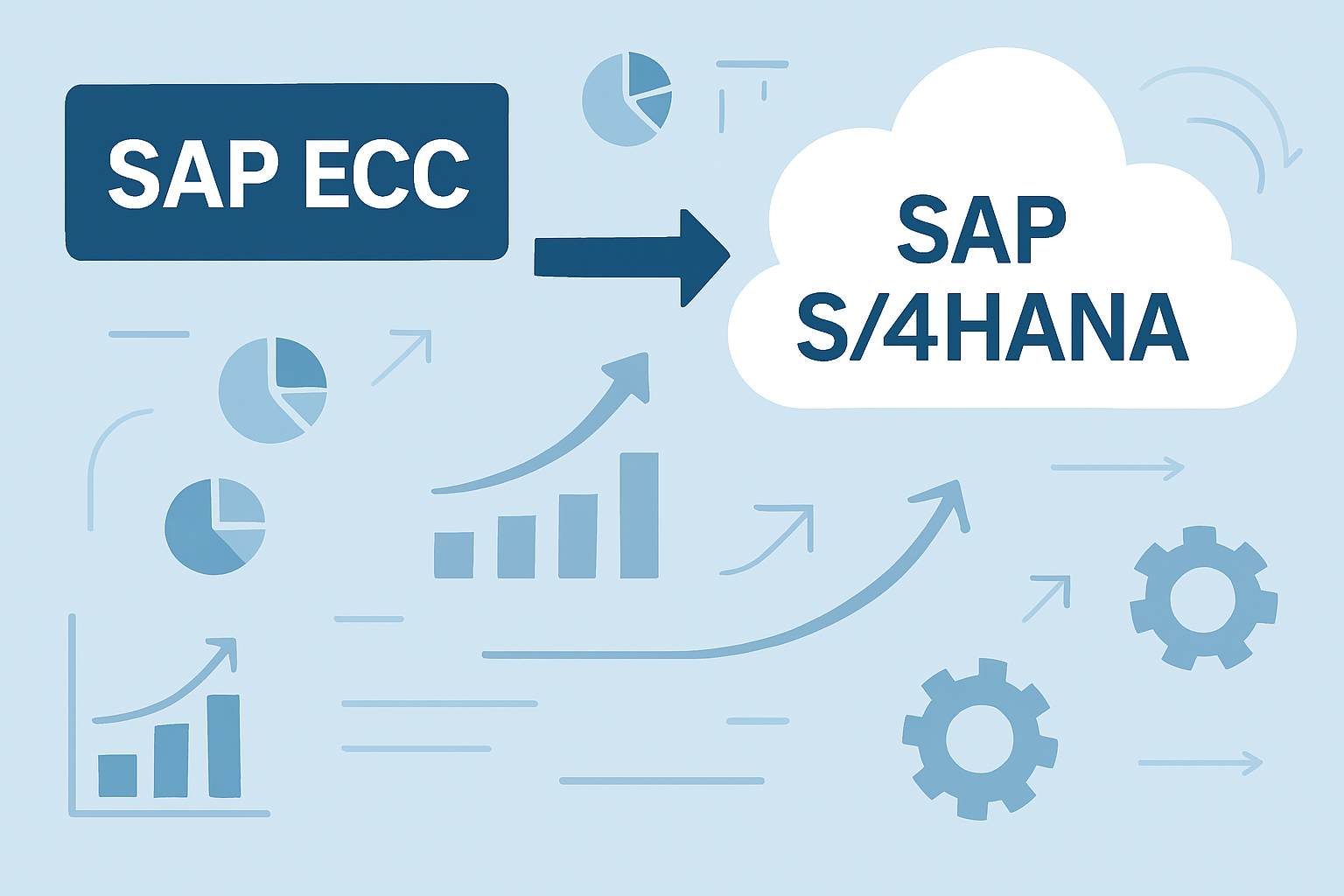
SAP S/4HANA Migration Strategies for the Future of ERP
As SAP ECC reaches the end of its mainstream maintenance in 2027, enterprises across the globe are planning or already executing their migration to SAP S/4HANA. This isn’t just a version upgrade; it’s a complete shift in the architecture, data model, and philosophy of enterprise resource planning. S/4HANA is built natively on the SAP HANA in-memory database, offering streamlined business processes, embedded analytics, and the foundation for intelligent automation.
Whether your organisation is exploring feasibility or actively managing a conversion project, understanding the available migration strategies, along with their technical implications is essential for long-term success.
Why S/4HANA? A technical overview
SAP S/4HANA provides a simplified data model and redesigned processes that leverage the full power of the HANA in-memory database. Unlike ECC, which was database-agnostic, S/4HANA is tightly integrated with the HANA platform. This allows for columnar, in-memory storage that supports high-speed transaction processing and real-time analytics on the same dataset. The system eliminates the need for aggregate and index tables, which significantly reduces data redundancy and simplifies reporting structures.
S/4HANA also introduces a unified financial architecture through the Universal Journal (table ACDOCA), bringing together financial accounting (FI) and controlling (CO) in one line item table. Embedded analytics, powered by Core Data Services (CDS) views, enable real-time reporting directly within transactional applications. On top of this, the platform supports advanced automation through machine learning, predictive analytics, and robotic process automation. It’s a technically advanced, cloud-ready ERP built for the digital age.
Migration strategies in technical detail
SAP offers three primary migration paths from ECC to S/4HANA: Greenfield, Brownfield, and Selective Data Transition. Each strategy presents different technical workflows, benefits, and challenges.
Greenfield implementation
A greenfield approach involves a fresh installation of S/4HANA and reengineering processes. This is often guided by the SAP Activate methodology, which includes predefined best practices, guided configuration, and phased implementation. The technical execution includes setting up a new instance of S/4HANA either on-premise or in the cloud, migrating master and selective transactional data using tools such as SAP Data Services or the SAP S/4HANA Migration Cockpit, and redesigning processes to align with SAP’s best practice content.
Legacy custom code must be evaluated, restructured, or redeveloped using ABAP Development Tools (ADT), often supported by static code analysis tools like the ABAP Test Cockpit (ATC). This approach is ideal for organisations seeking to eliminate technical debt and modernise their core ERP.
Brownfield conversion
Brownfield is a technical conversion of an existing ECC system into S/4HANA. It retains current configurations, data, and many of the familiar processes. The process begins with running SAP Readiness Check to identify incompatible objects, simplification items, and add-on compatibility. The conversion itself is typically managed via the Software Update Manager (SUM) using the Database Migration Option (DMO), which allows for a combined database and application layer conversion.
Key steps include adapting custom code to meet the standards of S/4HANA using ATC and Simplification Item Check tools. Data consistency is validated, and tables are converted—for example, legacy tables like BSIS and BSAS are replaced with HANA-optimised structures. This path allows for quicker time to value but may carry over outdated processes or excessive customisation if not properly cleansed beforehand.
Selective data transition
Selective Data Transition offers a tailored migration that combines aspects of both greenfield and brownfield strategies. It is particularly suitable for large enterprises with multiple ECC systems or those undergoing system consolidations. This approach enables organisations to migrate specific data sets, business units, or geographies, rather than converting the entire system at once.
Typically, this involves advanced extraction, transformation, and load processes using third-party tools such as SNP CrystalBridge or Natuvion’s Data Conversion Server (DCS). It also allows historical data to be filtered, cleaned, or left behind, which can improve performance and compliance. This method is highly flexible but technically complex, often requiring experienced migration partners and bespoke project planning.
Critical technical considerations
All migration paths require a focus on several technical areas. Custom code remediation is a major consideration, with legacy ABAP needing to be analysed and adapted for compatibility. SAP’s Code Inspector, ATC, and SCI tools help identify and resolve issues. Each S/4HANA release includes a simplification list, which documents changes to transactions, data structures, and processes. These items must be assessed during planning and implemented during the conversion.
Data volume management is also key, especially for brownfield migrations since archiving unnecessary data can reduce system downtime. Automated testing solutions such as SAP CBTA or third-party tools like Tricentis can accelerate quality assurance. Security and authorisations should be redefined for the S/4HANA environment, particularly with the introduction of the Fiori Launchpad and role-based access to apps. Implementation of Fiori includes configuring catalogues, groups, tiles, and Launchpad Designer access.
Cloud vs on-premise deployment
SAP S/4HANA offers multiple deployment models to meet various business needs. On-premise deployment offers maximum control and is often chosen by organisations with complex custom requirements or regulatory constraints. Private cloud, often delivered through the RISE with SAP offering, combines infrastructure, software, and support into a single subscription model. Public cloud deployments are highly standardised and provide the fastest time to value but come with limited scope for customisation.
Each deployment model has its own implications for infrastructure, upgrade cycles, cost, and resource requirements. Increasingly, businesses are leaning towards cloud strategies to support scalability, resilience, and innovation.
Build a smart roadmap
Migrating to SAP S/4HANA is not just a technology project, it’s a strategic enabler for digital transformation. Whether you take a greenfield, brownfield, or selective approach, success depends on building a roadmap that aligns with your business goals, technical constraints, and future-state vision. A successful migration involves careful planning, stakeholder alignment, and a robust understanding of SAP’s evolving landscape.
Early preparation allows organisations to conduct readiness assessments, pilot proof-of-concept systems, and optimise their target architecture. Done right, S/4HANA delivers not just a new ERP, but a platform for innovation and agility in the years to come.
